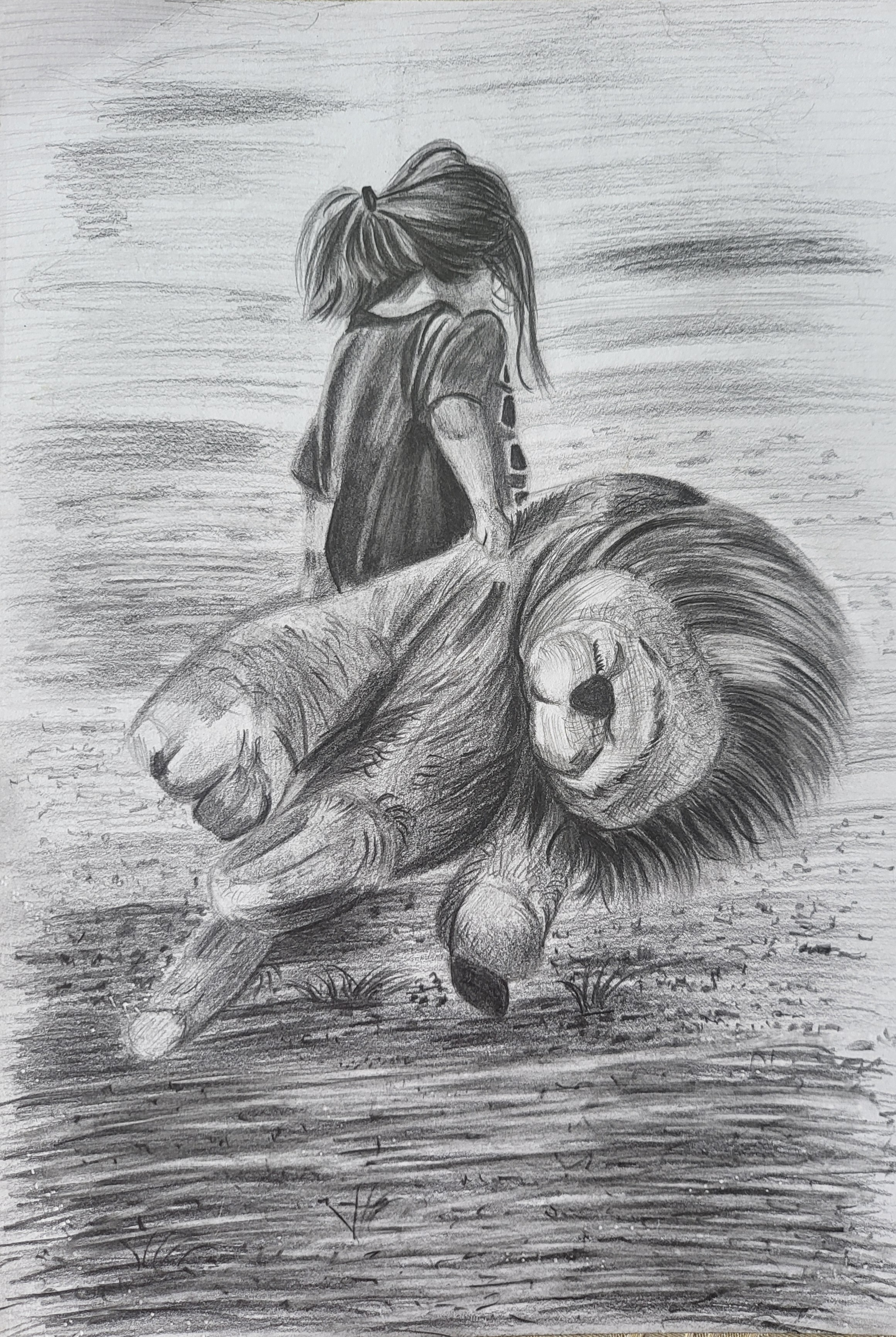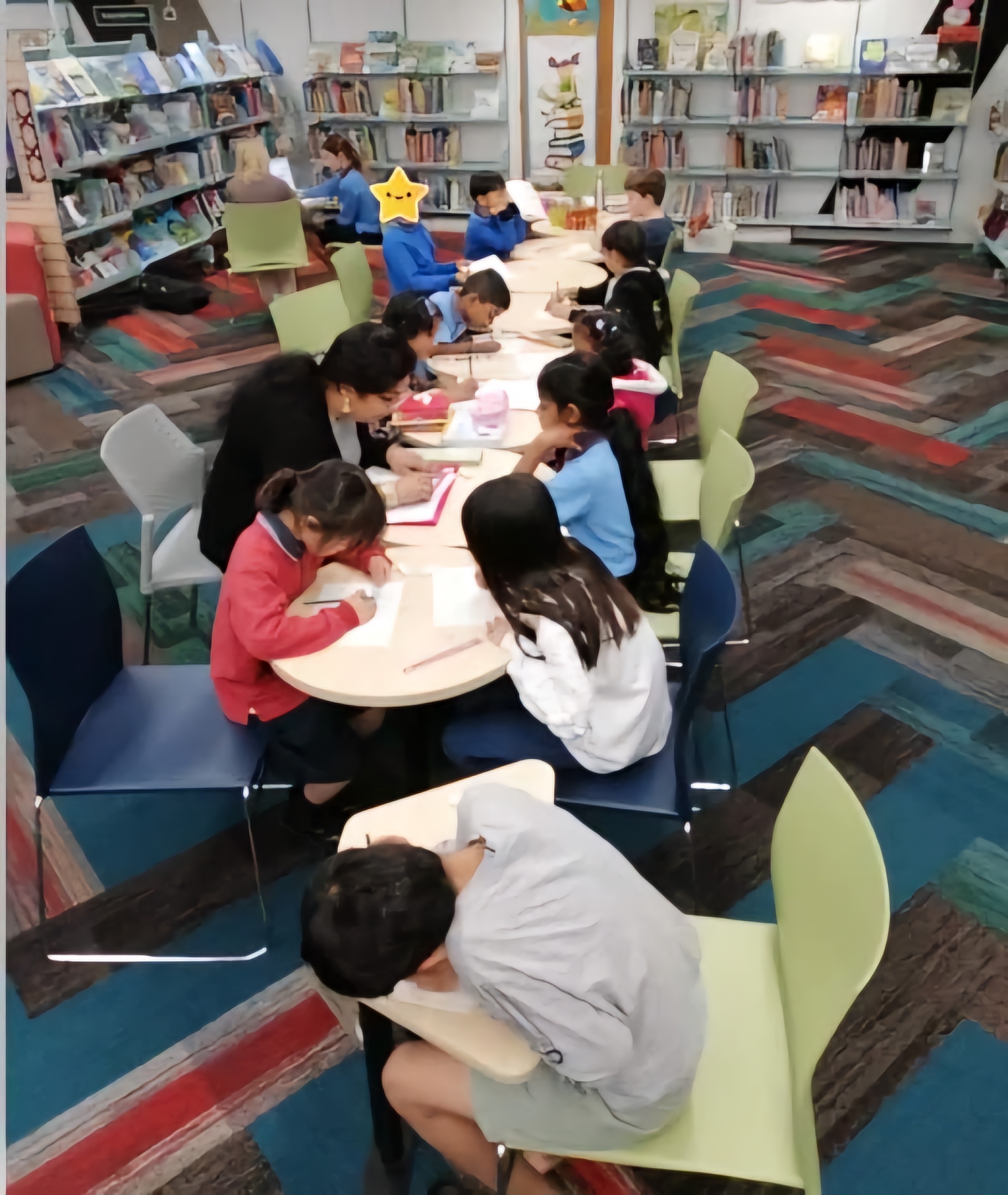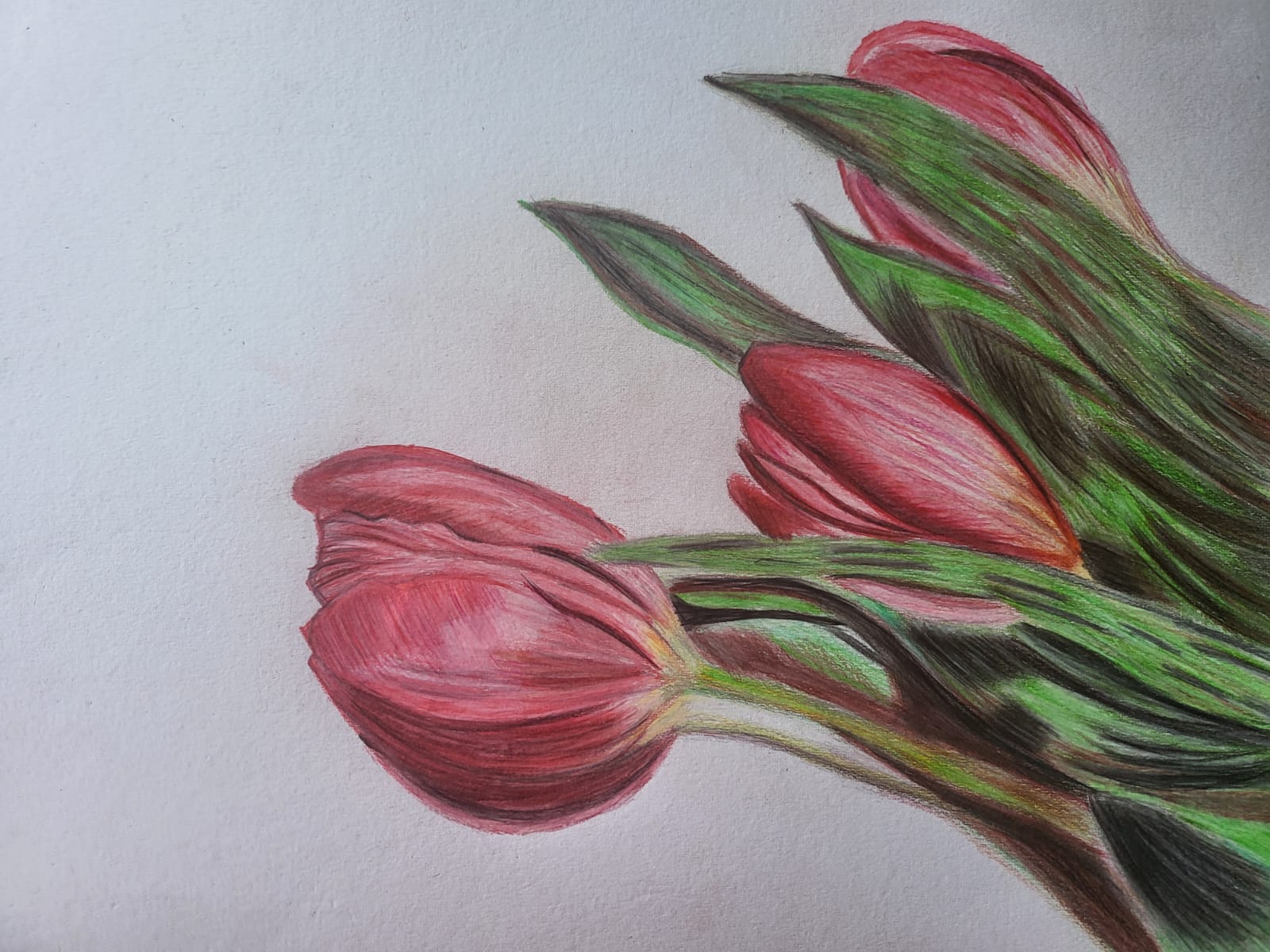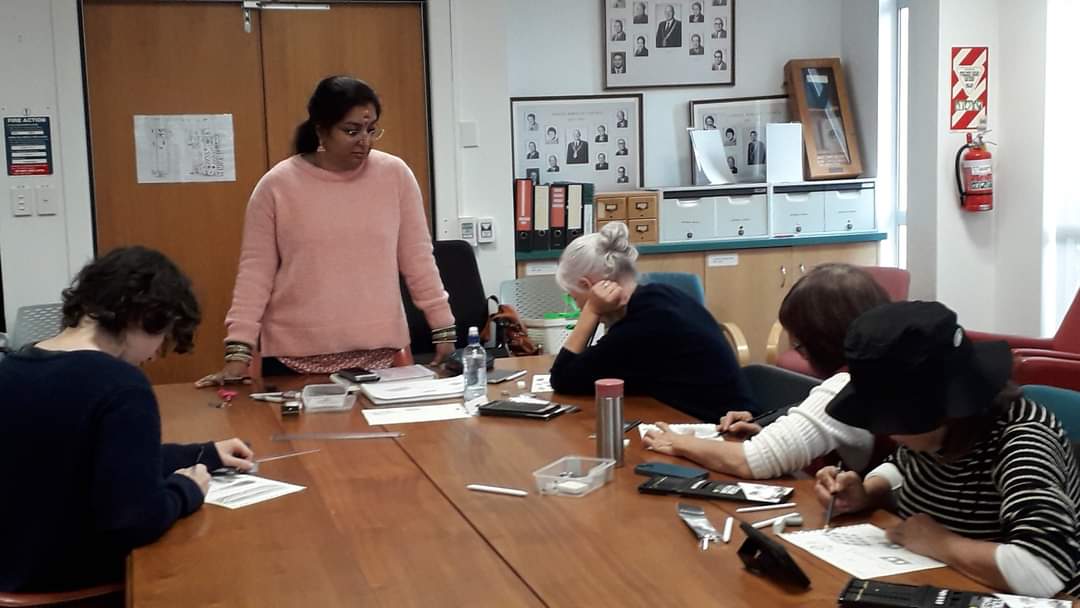
Pencil drawing is a artistic technique that involves creating images or artworks using graphite pencils, typically on paper or other drawing surfaces. It involves various shading, line work, and texturing techniques to produce a range of tonal values, textures, and details.
Key characteristics:
1. Medium: Graphite pencils (HB, 2B, 4B, 6B, etc.)
2. Surface: Paper, sketchbook, or drawing board
3. Techniques: Hatching, cross-hatching, stippling, blending, shading
4. Effects: Texture, tone, value, contrast, depth
Pencil drawing skills:
1. Line work
2. Proportion and measurement
3. Shading and texture
4. Contrast and composition
5. Erasing and correcting
Tools:
1. Graphite pencils
2. Eraser (kneaded or white)
3. Sharpener
4. Drawing board or paper
5. Blending stumps (optional)
Pencil drawing is a fundamental skill for artists, designers, and creatives, and is often used as a preliminary step for other artistic mediums.
Children’s art class is fun and a creative and an interactive class. We will first focus on drawing and using colour pencils later on we will use different materials such as markers , crayons , paints , crayons , craft and much more. Learning art makes you children communicate feelings , dreams and wishes. Drawing improves your child’s attention. It helps to get a creative mindset. Currently we are doing Drawing and Colouring class. Children’s love art because it a fun and provides self expression. Art activities help you child to important life skills.


Color pencil drawing is a vibrant and expressive art form that uses wax-based or oil-based colored pencils to create detailed, layered, and textured artworks.
Characteristics:
1. Medium: Colored pencils (wax-based or oil-based)
2. Surface: Paper, cardstock, or specialized color pencil paper
3. Techniques: Layering, blending, hatching, cross-hatching, stippling
4. Effects: Texture, depth, luminosity, and subtle color shifts
Types of Color Pencils:
1. Wax-based (e.g., Prismacolor, Faber-Castell Polychromos)
2. Oil-based (e.g., Derwent Coloursoft, Caran d'Ache Luminance)
3. Water-soluble (e.g., Faber-Castell Albrecht Dürer)
Techniques:
1. Layering: Building colors to achieve depth and luminosity
2. Blending: Merging colors for smooth transitions
3. Hatching: Creating texture and shading with parallel lines
4. Cross-hatching: Layering hatching lines for dimension
5. Stippling: Creating images with small dots
6. Burnishing: Applying pressure to create smooth, even areas
Tips and Tricks:
1. Choose the right paper: Look for paper with a smooth finish and good tooth.
2. Start with light colors: Build up gradually to avoid muddying.
3. Use layering: Achieve depth and dimension by layering colors.
4. Experiment with blending: Mix colors for unique hues.
5. Pay attention to texture: Vary pressure and stroke direction.
Color Pencil Drawing Styles:
1. Realistic: Highly detailed, lifelike representations
2. Abstract: Expressive, non-representational compositions
3. Impressionist: Capturing light and color
4. Pop Art: Vibrant, graphic, and playful
5. Botanical: Detailed, realistic plant illustrations
Tools and Materials:
1. Color pencils
2. Paper (hot press, cold press, or mixed media)
3. Sharpener
4. Eraser (kneaded or white)
5. Blending stumps (optional)
6. Solvent (for wax-based pencils)
Benefits:
1. Portability: Easy to take on-the-go
2. Versatility: Suitable for various styles and subjects
3. Relaxation: Meditative and calming process
4. Precision: Allows for fine details
5. Expressiveness: Vibrant colors and textures
Famous Color Pencil Artists:
1. Bet Borgeson
2. Lee Hammond
3. Wendy Jelbert
4. Colin Bradley
5. Debra Kaufman
Online Resources:
1. Color Pencil Society of America
2. Ann Kullberg's Color Pencil Magazine
3. The Virtual Instructor
4. Skillshare courses
5. YouTube tutorials
Whether you're a beginner or experienced artist, color pencil drawing offers endless creative possibilities. Experiment with techniques, explore different styles, and enjoy the vibrant world of color pencils!
